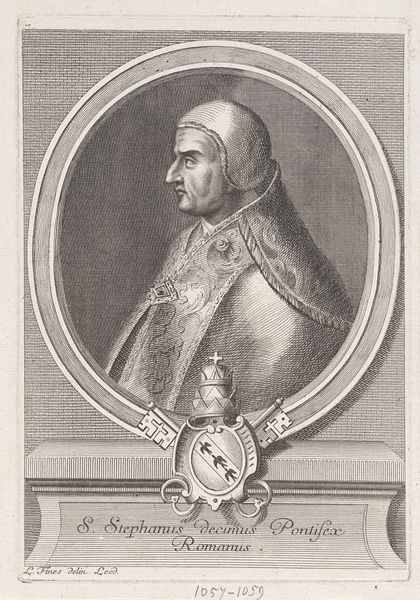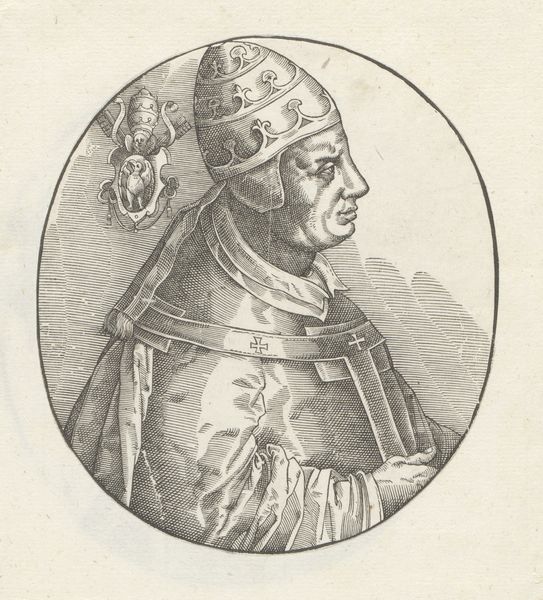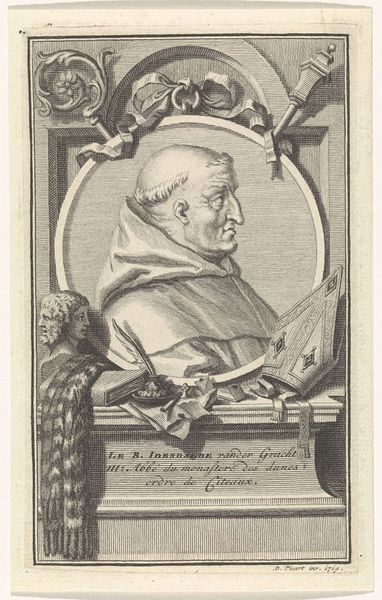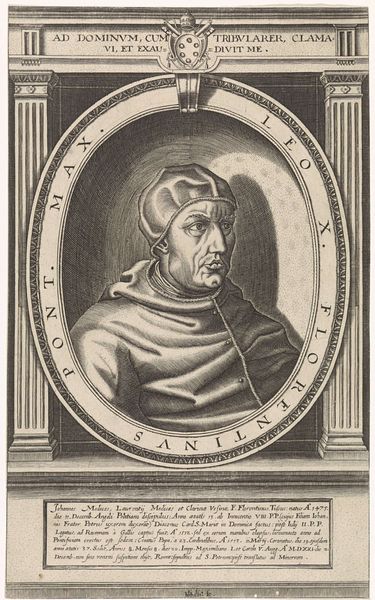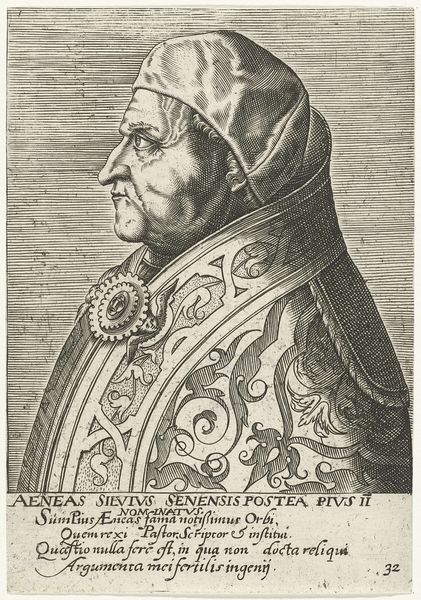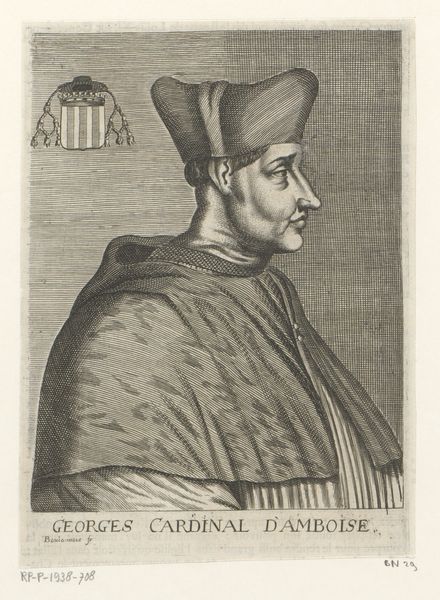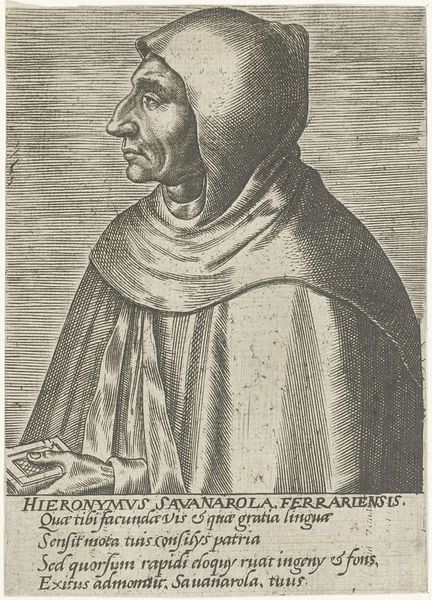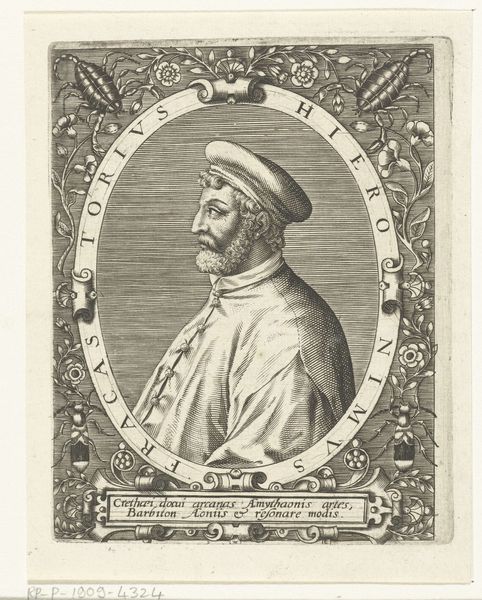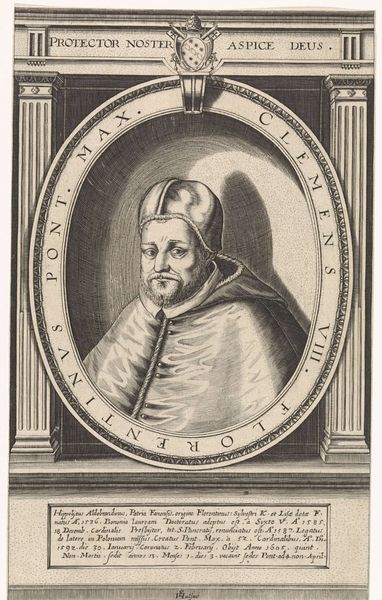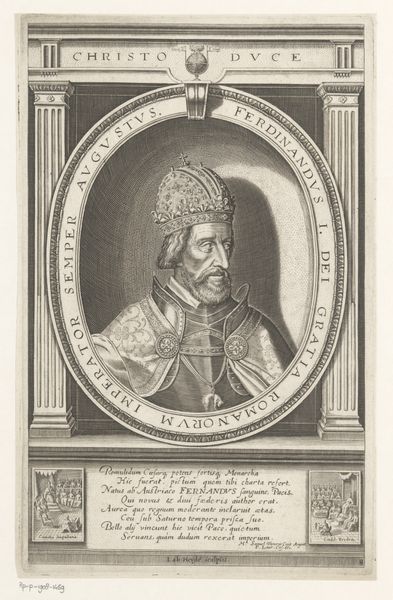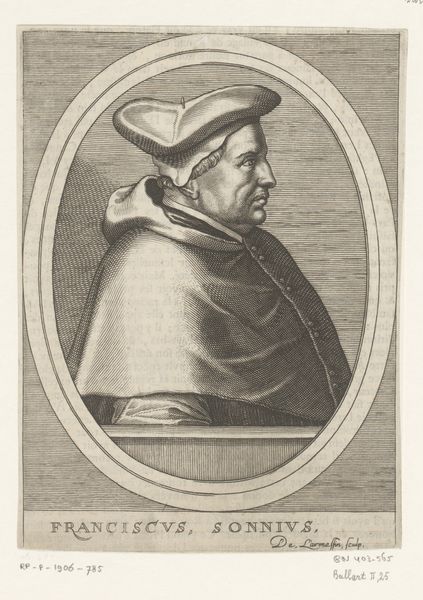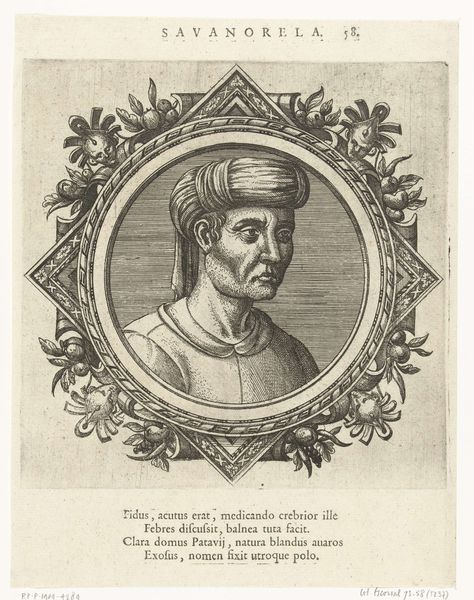
engraving
#
portrait
#
caricature
#
mannerism
#
history-painting
#
engraving
Dimensions: height mm, width mm
Copyright: Rijks Museum: Open Domain
Curator: Welcome! Today, we'll be looking at "Micha", an engraving created around 1613 by Cornelis Galle I, currently housed at the Rijksmuseum. Editor: My initial impression? Intriguing. The level of detail achieved through engraving is remarkable, and there's a palpable sense of gravitas, a certain weighty formality in the subject's gaze. Curator: The figure presented is most likely the prophet Micaiah or a figure associated to the period. Look closely, and you will observe phrases like "plango, et vt Ifrael maestus mecu, rogo, plangat", a lament to Israel; or, "Christi ortum, et magni ufsa reuelo Dei", heralding the revealing of a savior and God's secrets. Editor: Semiotically, that frame almost operates like a picture-within-a-picture, emphasizing the contained and constructed nature of the image. I notice also that the heavy line work builds a strong sense of depth. Consider the way light and shadow define the contours of his face and the folds of his garments. Curator: The visual language certainly recalls mannerism, evident in the expressive, somewhat exaggerated features, serving to emotionally move and unsettle the viewer. Editor: Exactly! I'd agree that these are certainly traits found within that style. Think about the subject's attire: What do those garments signify? Are they intended to denote religious authority or something else? And is that deliberate artifice or commentary? Curator: Well, his clothing would signal his high social standing, perhaps a clergyman, given that he's shown in profile reading, possibly from sacred scriptures, further associating the character to clerical roles or religious learnedness. This reinforces the theme of divine revelation through written authority. Editor: That makes sense within the historical and cultural milieu. Looking closely, the book’s presentation within the oval has sharp and triangular features; by contrast, the human subject features more round curves to differentiate nature vs spiritual elements. Curator: I hadn't considered the curves. Interesting. Seeing the symbolism inherent in form emphasizes that cultural continuity we have previously talked about in these works. Editor: What a compelling piece! Seeing these formal decisions creates, if anything, an artwork for historical thinking. Curator: And a reminder of the rich symbolic vocabulary that art from this era employed, even in a portrait format.
Comments
No comments
Be the first to comment and join the conversation on the ultimate creative platform.
